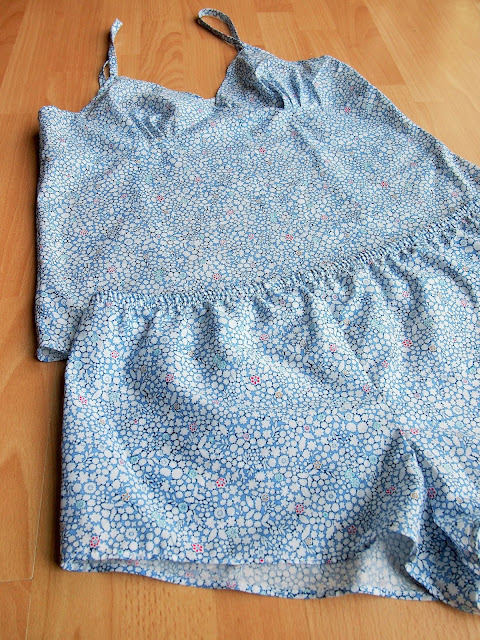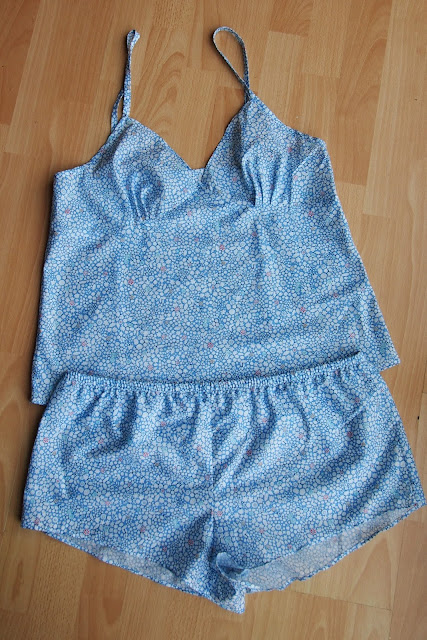After I'd had the idea, I wanted to get on with the sewing because the fabric had already been in my stash for quite a while by my standards. Thankfully it was easy to find a plain fabric to match the navy in the print, so after a quick trip to a local fabric shop I was ready to go.
I've already sewn one Seda dress this year and I was really happy with how that one turned out, so I did almost exactly the same for this one - with the exception of shortening the sleeves. I'm not sure why exactly, but this fabric just felt as if it should be made into a dress with short sleeves rather than three-quarter. Shortening the sleeves was obviously very easy, and I just used the sleeves from the Emery dress as a guide for the length.
In fact, while I'm calling this dress a Seda dress, it is very much a hybrid with the Emery dress because, like my first Seda, it also uses the skirt from the Emery. While the Seda skirt is also just a simple gathered skirt, the pieces were too wide for my 45" fabric so I couldn't use them. I still think that this is more a Seda dress than an Emery though, because the contrast yoke of the bodice is the distinctive feature of this version (view B) of the Seda pattern, and using the Emery skirt instead doesn't really alter the overall look of the dress.
I think the combination of the floral print with the plain navy yoke is really successful. With the two fabrics combined, the navy in the print is highlighted and the yellow and green which were originally bothering me don't seem as noticeable. Green and yellow are always slightly funny colours for me - I'm a fan of them on paper, but for me to wear them near my face they have to be just the right shade or they end up making me look ill. It's probably more in my head than anything anyone else would notice, but if I'm not happy with something then I won't wear it, and I didn't want that to be the fate of this fabric.
The navy yoke solved the problem in this case though, and I'm really happy with my finished Seda (or mostly Seda!) dress. I'm glad that this fabric has finally been sewn up so it can be worn instead of languishing on the shelf. Now I just need to find solutions for what to do with a couple of other long-term stash residents...
















